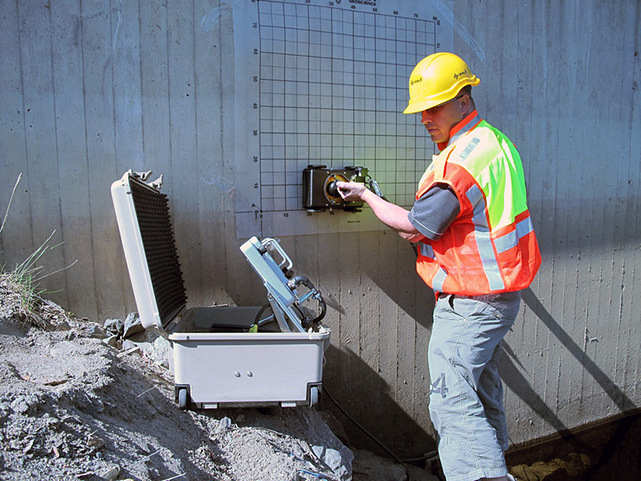Local RainierGPR Service Areas for Precision Concrete Scanning
Local RainierGPR Service Areas for Precision Concrete Scanning
Blog Article
Concrete Scanning: An Essential Step Towards Ensuring Structural Integrity and Safety
In the world of building and framework maintenance, the value of concrete scanning can not be overemphasized. This careful process holds the essential to revealing prospective dangers concealed under the surface area of apparently strong structures. By employing innovative technology and methodologies, concrete scanning offers as an essential device in making certain that the integrity and safety of buildings and bridges are maintained to the greatest standards. Nevertheless, beyond its surface-level effects, the function of concrete scanning expands much much deeper than satisfies the eye.
Significance of Concrete Scanning
Concrete scanning plays an essential function in guaranteeing the structural integrity and security of structures and facilities projects. By utilizing advanced modern technologies such as ground-penetrating radar (GPR) and electromagnetic induction, professionals can non-destructively inspect concrete structures to spot potential flaws, voids, embedded items, and support format. This process makes it possible for early detection of anomalies that might compromise the stability of a framework, stopping pricey problems and guaranteeing the safety and security of occupants.
Concrete scanning is particularly vital throughout the preparation and building and construction stages of a task. Before drilling, reducing, or coring into concrete, scanning aids identify the specific areas of rebar, post-tension cable televisions, and other ingrained elements, decreasing the threat of unexpected hits that can bring about structural weaknesses. In addition, concrete scanning aids in quality assurance by verifying the density of concrete covers and discovering any type of inconsistencies that may affect the overall sturdiness of the structure. Inevitably, buying concrete scanning services is not only a positive measure to reduce risks but also an essential step towards maintaining the long-lasting security and security of structures and facilities.
Technology for Concrete Inspection

Advantages of Early Detection
Prompt detection of structural issues can dramatically reduce threats and guarantee the long life of building tasks. By determining prospective problems early in the building and construction process, stakeholders can take positive measures to resolve concerns before they escalate right into bigger and much more expensive troubles. Among the crucial benefits of early detection is the prevention of architectural failings, which can position major safety threats and cause project delays and economic losses.
Furthermore, early detection enables for timely repair services and maintenance, which can help prolong the lifespan of the structure. By attending to problems promptly, building teams can stay clear of pricey fixings or perhaps the demand for early substitute of architectural parts. This proactive technique not just conserves money and time yet likewise boosts the overall safety and security and toughness of the construction task.
Additionally, very early detection can boost job preparation and decision-making by supplying stakeholders with important understandings into the problem of the structure. Equipped with this information, project managers can make informed options pertaining to building materials, methods, and timelines, leading to more efficient and successful job results.
Making Sure Architectural Security
Ensuring the structural stability of a building project is vital to its safety and security and durability. Structural stability describes the capacity of a structure or framework to preserve its form and function under environmental problems and numerous lots. To attain this, detailed analysis and monitoring of the structure are crucial. Concrete scanning plays a crucial function in making certain architectural stability by identifying possible issues such as voids, delamination, or reinforcement corrosion that could jeopardize the honesty of the framework with time.
By making use of innovative scanning technologies like ground-penetrating radar (GPR) and electromagnetic induction, building and construction specialists can non-invasively evaluate concrete frameworks to determine areas of concern under the surface. This positive approach permits the early discovery of defects or weak points, making it possible for prompt repair services or support to stop architectural failings.
Regular concrete scanning throughout various building phases and throughout the life process of a structure can help preserve its stability, mitigate risks, and guarantee the security of residents. By prioritizing structural stability via concrete scanning, building tasks can enhance their strength and resilience, inevitably adding to higher safety and longevity.
Stopping Crucial Failings
To safeguard against devastating events, precise tracking and positive maintenance are essential in preventing other essential failures within structural frameworks. Finding prospective problems before they escalate is key to stop architectural failures. Executing regular evaluations, such as concrete scanning, can disclose hidden issues like spaces, splits, or rust that can compromise the honesty of a framework. By utilizing innovative scanning innovations like Ground Penetrating Radar (GPR) or Concrete X-ray, designers can non-destructively assess the condition of concrete and recognize weak factors that call for support or fixing - RainierGPR Service Areas.

Conclusion
To conclude, concrete scanning plays an essential function in making sure structural integrity and safety and security by utilizing innovative innovation for very early discovery of potential concerns. This positive approach helps protect against important failings and guarantees the stability of frameworks. It is vital to prioritize concrete evaluation as a standard method to safeguard the long life and safety of buildings and framework.
Concrete scanning plays an essential function in making sure the structural honesty and safety and security of structures and framework projects. Furthermore, concrete scanning help in quality control by confirming the thickness of concrete covers and spotting any kind of discrepancies that content may impact the overall toughness of the framework. Concrete scanning plays a crucial duty in ensuring architectural security by identifying potential problems such as spaces, delamination, or reinforcement corrosion that could compromise the integrity of the framework over time.

In verdict, concrete scanning plays a crucial role in ensuring architectural integrity and safety by utilizing advanced modern technology for early detection of possible problems.
Report this page